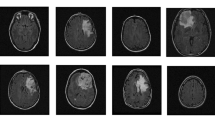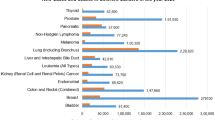Abstract
Mesothelin (MSLN) is a cell surface glycoprotein present in many cancer types. Its expression is generally associated with an unfavorable prognosis. This study examined the prognostic significance of MSLN expression in different areas of individual colorectal cancers (CRCs) using tissue microarrays (TMAs) by enrolling 314 patients with stage II (T3–T4, N0, M0) CRCs. Using formalin-fixed paraffin-embedded tissue blocks from patients, TMA blocks were constructed. Tissue core specimens were obtained from submucosal invasive front (Fr-sm), subserosal invasive front (Fr-ss), central area (Ce), and rolled edge (Ro) of each tumor. Using these four-point TMA sets, MSLN expression was immunohistochemically surveyed. The area-specific prognostic significance of MSLN expression was evaluated. A deep learning convolutional neural network algorithm was used for imaging analysis and evaluating our judgment’s objectivity. MSLN staining ratio was positively correlated between the manual and machine-learning analyses (r = 0.71). The correlation coefficient between Ro and Ce, Ro and Fr-sm, and Ro and Fr-ss was r = 0.63, r = 0.54, and r = 0.61, respectively. Disease-specific survival curves for the MSLN-positive and MSLN-negative groups in Fr-sm, Fr-ss, and Ro were significantly different (five-year survival rates 88.1% and 95.5% (P = 0.024), 85.0 and 96.2% (P = 0.0087), 87.8 and 95.5% (P = 0.051), and 77.9 and 95.8% (P = 0.046) for Fr-sm, Fr-ss, Ce, and Ro, respectively). The analysis performed using area-specific four-point TMAs clearly demonstrated that MSLN expression in stage II CRC was relatively homogeneous within tumors. Additionally, high MSLN expression showed or tended to show unfavorable prognostic significance regardless of the tumor area.




Similar content being viewed by others
Abbreviations
- CI:
-
Confidence interval
- DSS:
-
Disease-specific survival
- HR:
-
Hazard ratio
- ROC:
-
Receiver operating characteristic
- TMA:
-
Tissue microarray
- EMT:
-
Epithelial mesenchymal transition
References
Jass JR, Love SB, Northover JM (1987) A new prognostic classification of rectal cancer. Lancet 1:1303–1306. https://doi.org/10.1016/s0140-6736(87)90552-6
Ono M, Sakamoto M, Ino Y, Moriya Y, Sugihara K, Muto T, Hirohashi S (1996) Cancer cell morphology at the invasive front and expression of cell adhesion-related carbohydrate in the primary lesion of patients with colorectal carcinoma with liver metastasis. Cancer 78:1179–1186. https://doi.org/10.1002/(SICI)1097-0142(19960915)78:6<1179::AID-CNCR3>3.0.CO;2-5
Hase K, Shatney C, Johnson D, Trollope M, Vierra M (1993) Prognostic value of tumor “budding” in patients with colorectal cancer. Dis Colon Rectum 36:627–635. https://doi.org/10.1007/bf02238588
Ueno H, Murphy J, Jass JR, Mochizuki H, Talbot IC (2002) Tumour ‘Budding’ as an index to estimate the potential of aggressiveness in rectal cancer. Histopathology 40:127–132. https://doi.org/10.1046/j.1365-2559.2002.01324.x
Talbot IC, Ritchie S, Leighton M, Hughes AO, Bussey HJ, Morson BC (1981) Invasion of veins by carcinoma of rectum: method of detection, histological features and significance. Histopathology 5:141–163. https://doi.org/10.1111/j.1365-2559.1981.tb01774.x
Ordonez NG (2003) Value of mesothelin immunostaining in the diagnosis of mesothelioma. Mod Pathol 16:192–197. https://doi.org/10.1097/01.MP.0000056981.16578.C3
Frierson HF Jr, Moskaluk CA, Powell SM, Zhang H, Cerilli LA, Stoler MH, Cathro H, Hampton GM (2003) Large-scale molecular and tissue microarray analysis of mesothelin expression in common human carcinomas. Hum Pathol 34:605–609. https://doi.org/10.1016/S0046-8177(03)00177-1
Bera TK, Pastan I (2000) Mesothelin is not required for normal mouse development or reproduction. Mol Cell Biol 20:2902–2906. https://doi.org/10.1128/mcb.20.8.2902-2906.2000
Cheng WF, Huang CY, Chang MC, Hu YH, Chiang YC, Chen YL, Hsieh CY, Chen CA (2009) High mesothelin correlates with chemoresistance and poor survival in epithelial ovarian carcinoma. Br J Cancer 100:1144–1153. https://doi.org/10.1038/sj.bjc.6604964
Shiraishi T, Shinto E, Mochizuki S, Tsuda H, Kajiwara Y, Okamoto K, Einama T, Hase K, Ueno H (2019) Mesothelin expression has prognostic value in stage II/III colorectal cancer. Virchows Arch 474:297–307. https://doi.org/10.1007/s00428-018-02514-4
Kononen J, Bubendorf L, Kallioniemi A, Barlund M, Schraml P, Leighton S, Torhorst J, Mihatsch MJ, Sauter G, Kallioniemi OP (1998) Tissue microarrays for high-throughput molecular profiling of tumor specimens. Nat Med 4:844–847. https://doi.org/10.1038/nm0798-844
Shinto E, Tsuda H, Ueno H, Hashiguchi Y, Hase K, Tamai S, Mochizuki H, Inazawa J, Matsubara O (2005) Prognostic implication of laminin-5 gamma 2 chain expression in the invasive front of colorectal cancers, disclosed by area-specific four-point tissue microarrays. Lab Investig 85:257–266. https://doi.org/10.1038/labinvest.3700199
Caie PD, Turnbull AK, Farrington SM, Oniscu A, Harrison DJ (2014) Quantification of tumour budding, lymphatic vessel density and invasion through image analysis in colorectal cancer. J Transl Med 12:156. https://doi.org/10.1186/1479-5876-12-156
Caie PD, Zhou Y, Turnbull AK, Oniscu A, Harrison DJ (2016) Novel histopathologic feature identified through image analysis augments stage II colorectal cancer clinical reporting. Oncotarget 7:44381–44394. https://doi.org/10.18632/oncotarget.10053
Nearchou IP, Lillard K, Gavriel CG, Ueno H, Harrison DJ, Caie PD (2019) Automated analysis of lymphocytic infiltration, tumor budding, and their spatial relationship improves prognostic accuracy in colorectal cancer. Cancer Immunol Res 7:609–620. https://doi.org/10.1158/2326-6066.CIR-18-0377
Balkenhol MCA, Bult P, Tellez D, Vreuls W, Clahsen PC, Ciompi F, van der Laak J (2019) Deep learning and manual assessment show that the absolute mitotic count does not contain prognostic information in triple negative breast cancer. Cell Oncol 42:555–569. https://doi.org/10.1007/s13402-019-00445-z
Brieu N, Gavriel CG, Nearchou IP, Harrison DJ, Schmidt G, Caie PD (2019) Automated tumour budding quantification by machine learning augments TNM staging in muscle-invasive bladder cancer prognosis. Sci Rep 9:5174. https://doi.org/10.1038/s41598-019-41595-2
Lucas M, Jansen I, Savci-Heijink CD, Meijer SL, de Boer OJ, van Leeuwen TG, de Bruin DM, Marquering HA (2019) Deep learning for automatic Gleason pattern classification for grade group determination of prostate biopsies. Virchows Arch 475:77–83. https://doi.org/10.1007/s00428-019-02577-x
Brierley J, Gospodarowicz MK, Wittekind C (2017) TNM classification of malignant tumours. Wiley-Liss, New York, pp 73–76
Watanabe T, Itabashi M, Shimada Y, Tanaka S, Ito Y, Ajioka Y, Hamaguchi T, Hyodo I, Igarashi M, Ishida H, Ishihara S, Ishiguro M, Kanemitsu Y, Kokudo N, Muro K, Ochiai A, Oguchi M, Ohkura Y, Saito Y, Sakai Y, Ueno H, Yoshino T, Boku N, Fujimori T, Koinuma N, Morita T, Nishimura G, Sakata Y, Takahashi K, Tsuruta O, Yamaguchi T, Yoshida M, Yamaguchi N, Kotake K, Sugihara K, Japanese Society for Cancer of the C, Rectum: Japanese Society for Cancer of the Colon and Rectum (JSCCR) (2015) Guidelines 2014 for treatment of colorectal cancer. Int J Clin Oncol 20:207–239. https://doi.org/10.1007/s10147-015-0801-z
Yamadera M, Shinto E, Tsuda H, Kajiwara Y, Naito Y, Hase K, Yamamoto J, Ueno H (2018) Sialyl Lewis(x) expression at the invasive front as a predictive marker of liver recurrence in stage II colorectal cancer. Oncol Lett 15:221–228. https://doi.org/10.3892/ol.2017.7340
Landis JR, Koch GG (1977) The measurement of observer agreement for categorical data. Biometrics 33:159–174
Christensen M, Katballe N, Wikman F, Primdahl H, Sorensen FB, Laurberg S, Orntoft TF (2002) Antibody-based screening for hereditary nonpolyposis colorectal carcinoma compared with microsatellite analysis and sequencing. Cancer 95:2422–2430. https://doi.org/10.1002/cncr.10979
Marcus VA, Madlensky L, Gryfe R, Kim H, So K, Millar A, Temple LK, Hsieh E, Hiruki T, Narod S, Bapat BV, Gallinger S, Redston M (1999) Immunohistochemistry for hMLH1 and hMSH2: a practical test for DNA mismatch repair-deficient tumors. Am J Surg Pathol 23:1248–1255. https://doi.org/10.1097/00000478-199910000-00010
Akaike H (1974) A new look at the statistical model identification. IEEE Trans Automat Control 19:716–722
Baba K, Ishigami S, Arigami T, Uenosono Y, Okumura H, Matsumoto M, Kurahara H, Uchikado Y, Kita Y, Kijima Y, Kitazono M, Shinchi H, Ueno S, Natsugoe S (2012) Mesothelin expression correlates with prolonged patient survival in gastric cancer. J Surg Oncol 105:195–199. https://doi.org/10.1002/jso.22024
Einama T, Homma S, Kamachi H, Kawamata F, Takahashi K, Takahashi N, Taniguchi M, Kamiyama T, Furukawa H, Matsuno Y, Tanaka S, Nishihara H, Taketomi A, Todo S (2012) Luminal membrane expression of mesothelin is a prominent poor prognostic factor for gastric cancer. Br J Cancer 107:137–142. https://doi.org/10.1038/bjc.2012.235
Li M, Bharadwaj U, Zhang R, Zhang S, Mu H, Fisher WE, Brunicardi FC, Chen C, Yao Q (2008) Mesothelin is a malignant factor and therapeutic vaccine target for pancreatic cancer. Mol Cancer Ther 7:286–296. https://doi.org/10.1158/1535-7163.MCT-07-0483
Yen MJ, Hsu CY, Mao TL, Wu TC, Roden R, Wang TL, Shih Ie M (2006) Diffuse mesothelin expression correlates with prolonged patient survival in ovarian serous carcinoma. Clin Cancer Res 12:827–831. https://doi.org/10.1158/1078-0432.CCR-05-1397
Bokemeyer C, Bondarenko I, Makhson A, Hartmann JT, Aparicio J, de Braud F, Donea S, Ludwig H, Schuch G, Stroh C, Loos AH, Zubel A, Koralewski P (2009) Fluorouracil, leucovorin, and oxaliplatin with and without cetuximab in the first-line treatment of metastatic colorectal cancer. J Clin Oncol 27:663–671. https://doi.org/10.1200/JCO.2008.20.8397
Van Cutsem E, Kohne CH, Hitre E, Zaluski J, Chang Chien CR, Makhson A, D'Haens G, Pinter T, Lim R, Bodoky G, Roh JK, Folprecht G, Ruff P, Stroh C, Tejpar S, Schlichting M, Nippgen J, Rougier P (2009) Cetuximab and chemotherapy as initial treatment for metastatic colorectal cancer. N Engl J Med 360:1408–1417. https://doi.org/10.1056/NEJMoa0805019
Saltz LB, Clarke S, Diaz-Rubio E, Scheithauer W, Figer A, Wong R, Koski S, Lichinitser M, Yang TS, Rivera F, Couture F, Sirzen F, Cassidy J (2008) Bevacizumab in combination with oxaliplatin-based chemotherapy as first-line therapy in metastatic colorectal cancer: a randomized phase III study. J Clin Oncol 26:2013–2019. https://doi.org/10.1200/JCO.2007.14.9930
Hassan R, Thomas A, Alewine C, Le DT, Jaffee EM, Pastan I (2016) Mesothelin immunotherapy for cancer: ready for prime time? J Clin Oncol 34:4171–4179. https://doi.org/10.1200/JCO.2016.68.3672
Hanahan D, Weinberg RA, Hallmarks of Cancer (2011) The next generation. Cell 144:646–674. https://doi.org/10.1016/j.cell.2011.02.013
He X, Wang L, Riedel H, Wang K, Yang Y, Dinu CZ, Rojanasakul Y (2017) Mesothelin promotes epithelial-to-mesenchymal transition and tumorigenicity of human lung cancer and mesothelioma cells. Mol Cancer 16:63. https://doi.org/10.1186/s12943-017-0633-8
Brabletz T, Jung A, Spaderna S, Hlubek F, Kirchner T (2005) Opinion: migrating cancer stem cells - an integrated concept of malignant tumour progression. Nat Rev Cancer 5:744–749. https://doi.org/10.1038/nrc1694
Karagiannis GS, Poutahidis T, Erdman SE, Kirsch R, Riddell RH, Diamandis EP (2012) Cancer-associated fibroblasts drive the progression of metastasis through both paracrine and mechanical pressure on cancer tissue. Mol Cancer Res 10:1403–1418. https://doi.org/10.1158/1541-7786.MCR-12-0307
Ono M, Tsuda H, Yunokawa M, Yonemori K, Shimizu C, Tamura K, Kinoshita T, Fujiwara Y (2015) Prognostic impact of Ki-67 labeling indices with 3 different cutoff values, histological grade, and nuclear grade in hormone-receptor-positive, HER2-negative, node-negative invasive breast cancers. Breast Cancer 22:141–152. https://doi.org/10.1007/s12282-013-0464-4
Salto-Tellez M, Maxwell P, Hamilton P (2019) Artificial intelligence-the third revolution in pathology. Histopathology 74:372–376. https://doi.org/10.1111/his.13760
Martin DR, Hanson JA, Gullapalli RR, Schultz FA, Sethi A, Clark DP (2019, 2019) A deep learning convolutional neural network can recognize common patterns of injury in gastric pathology. Arch Pathol Lab Med. https://doi.org/10.5858/arpa.2019-0004-OA
Bui MM, Asa SL, Pantanowitz L, Parwani A, van der Laak J, Ung C, Balis U, Isaacs M, Glassy E, Manning L (2019) Digital and computational pathology: bring the future into focus. J Pathol Inform 10:10
Funding
I.P.N. is the recipient of a Medical Research Scotland PhD Studentship awarded to P.D.C. Indica Labs, Inc. provided in kind resource.
Author information
Authors and Affiliations
Contributions
TS and ES conceived and designed the experiments. TS and IPN performed the experiments. IPN performed the digital image analysis. TS, ES, and HT analyzed the histopathological data. TS, ES, and IPN drafted the manuscript. YK, TE, PDC, YK, and HU revised the manuscript. TS finalized the manuscript. All authors reviewed and approved the manuscript.
Corresponding author
Ethics declarations
The experiments reported here were performed in agreement with the Declaration of Helsinki principles and with the Ethics Committee of the National Defense Medical College Hospital, Tokorozawa, Japan. ES is the guarantor of this work and, as such, had full access to all of the data in the study and takes responsibility for the integrity of the data and the accuracy of the data analysis.
Conflict of interest
The authors declare that they have no conflict of interest.
Additional information
Publisher’s note
Springer Nature remains neutral with regard to jurisdictional claims in published maps and institutional affiliations.
This article is part of the Topical Collection on Quality in Pathology
Rights and permissions
About this article
Cite this article
Shiraishi, T., Shinto, E., Nearchou, I.P. et al. Prognostic significance of mesothelin expression in colorectal cancer disclosed by area-specific four-point tissue microarrays. Virchows Arch 477, 409–420 (2020). https://doi.org/10.1007/s00428-020-02775-y
Received:
Revised:
Accepted:
Published:
Issue Date:
DOI: https://doi.org/10.1007/s00428-020-02775-y




